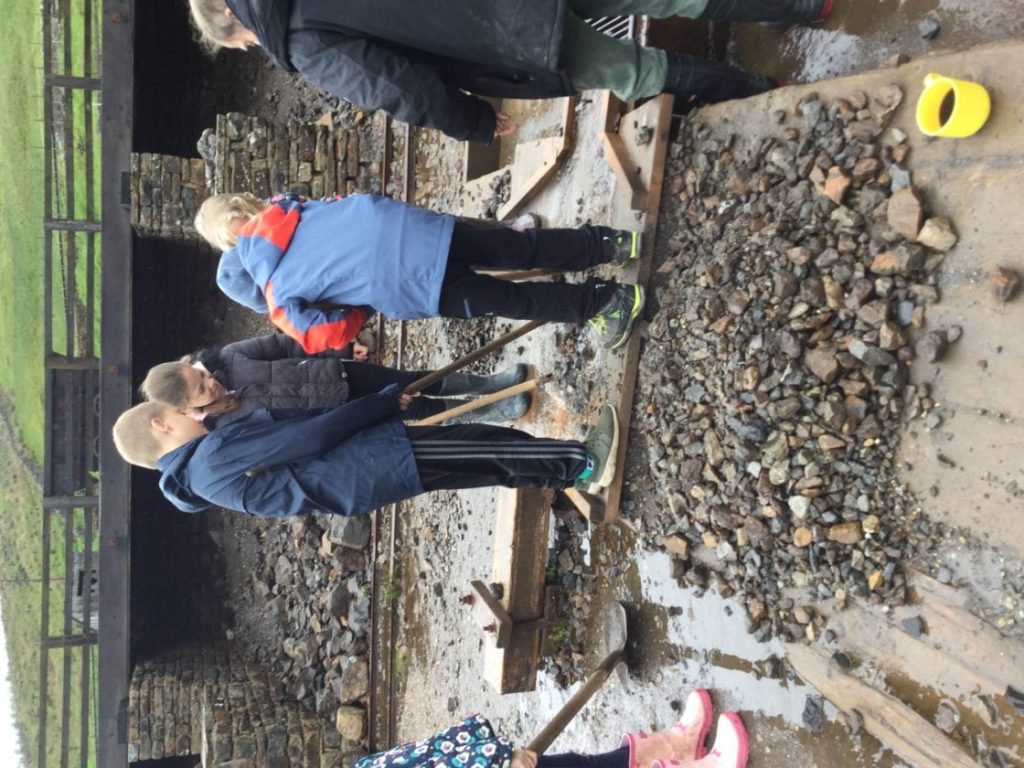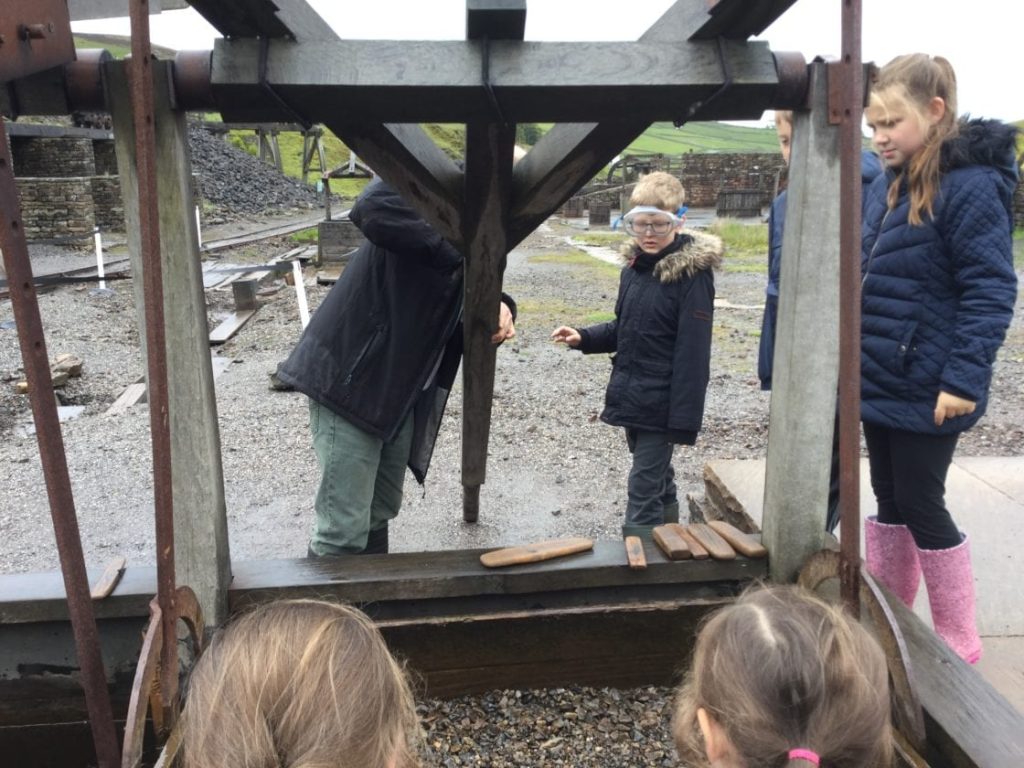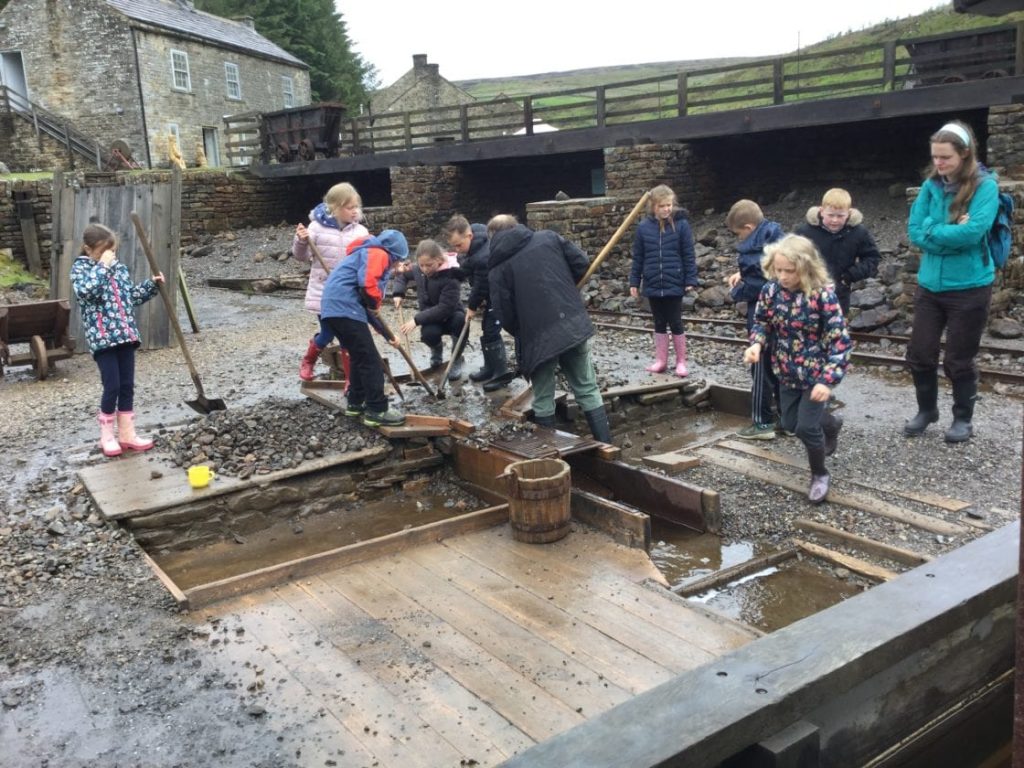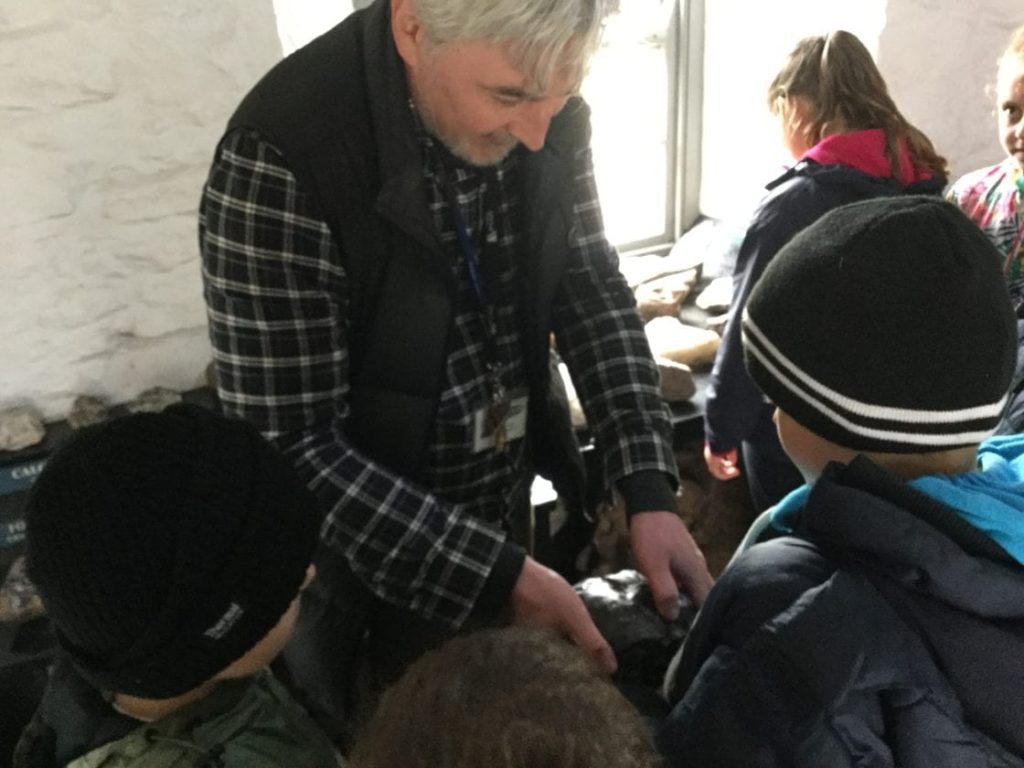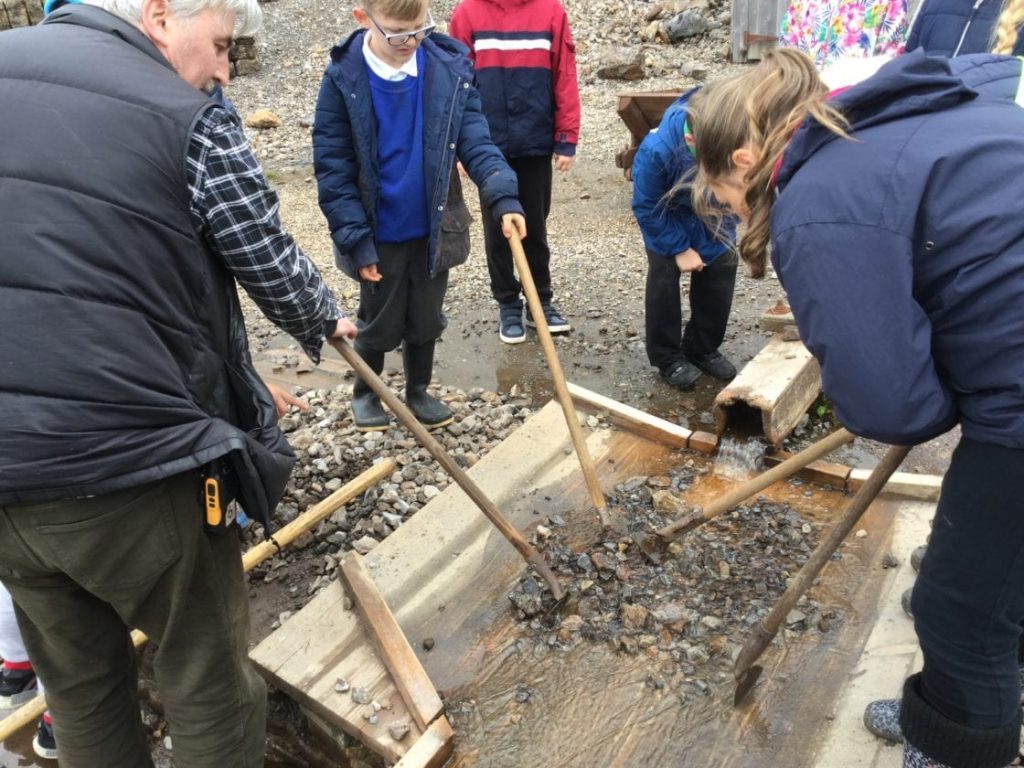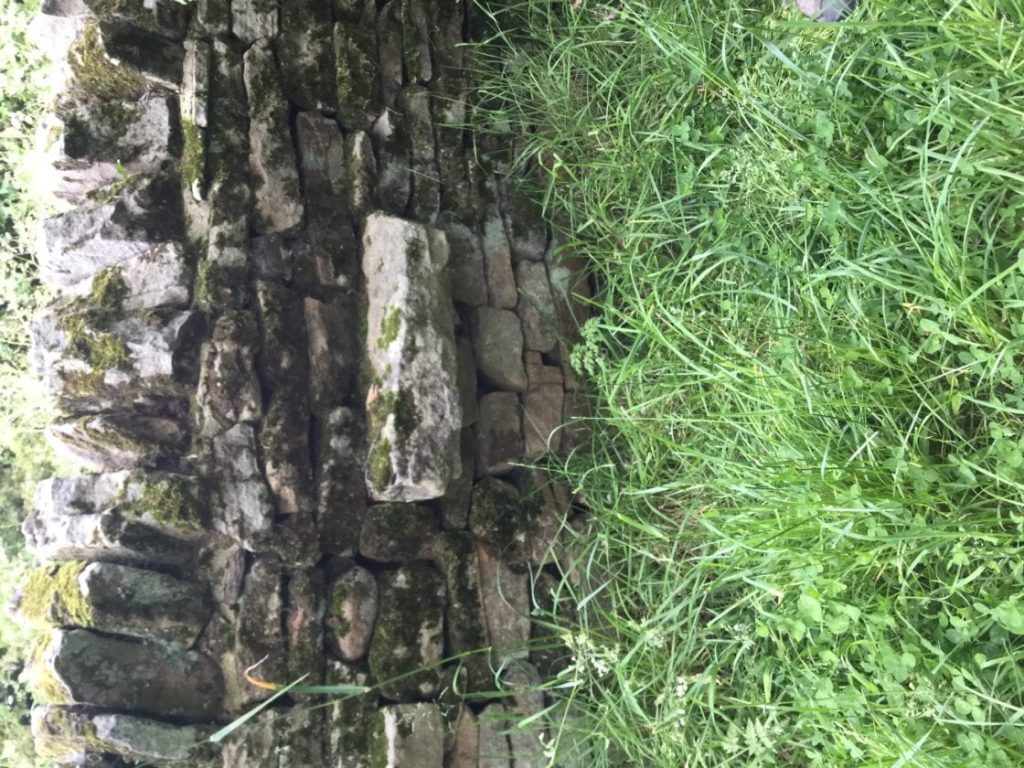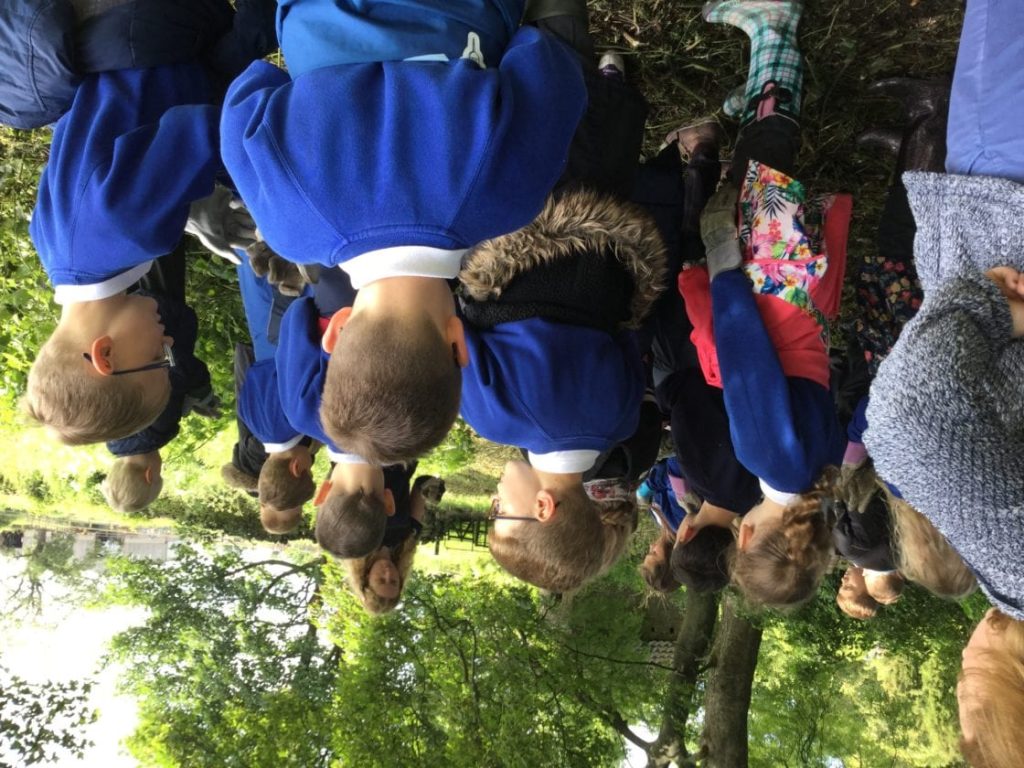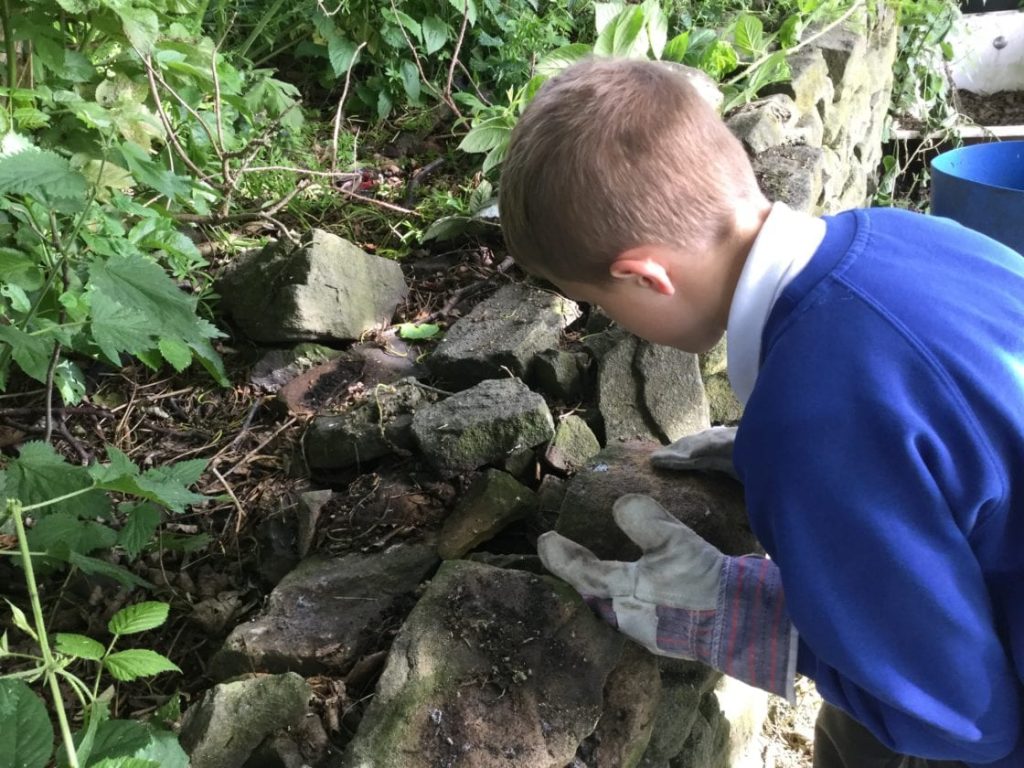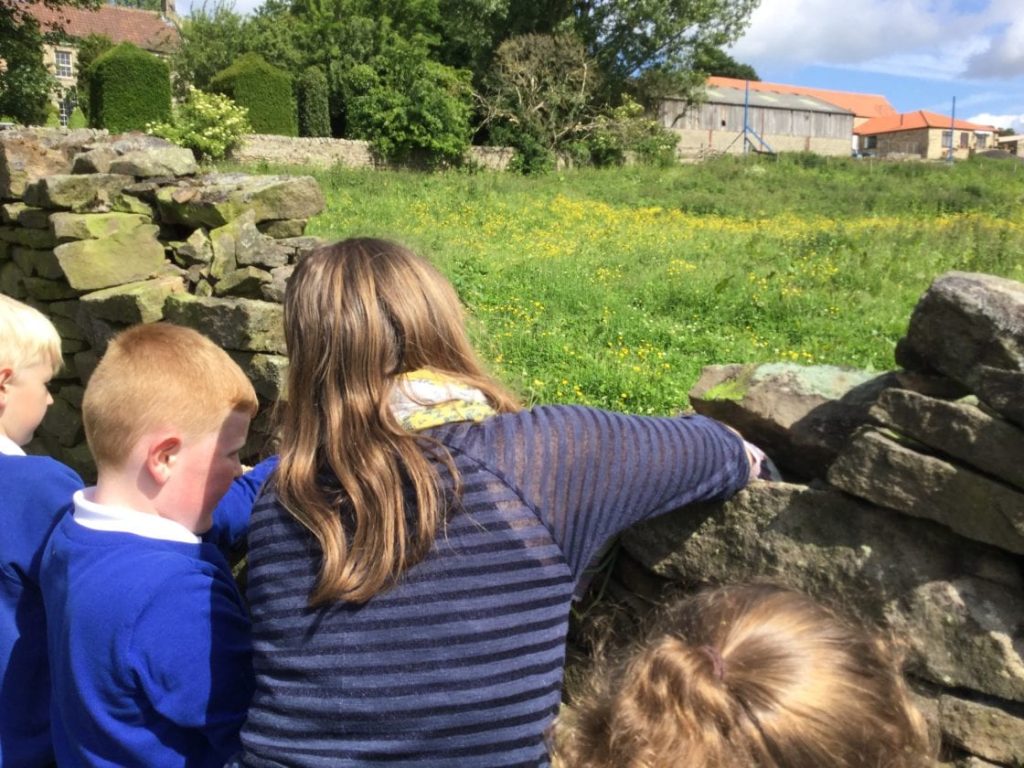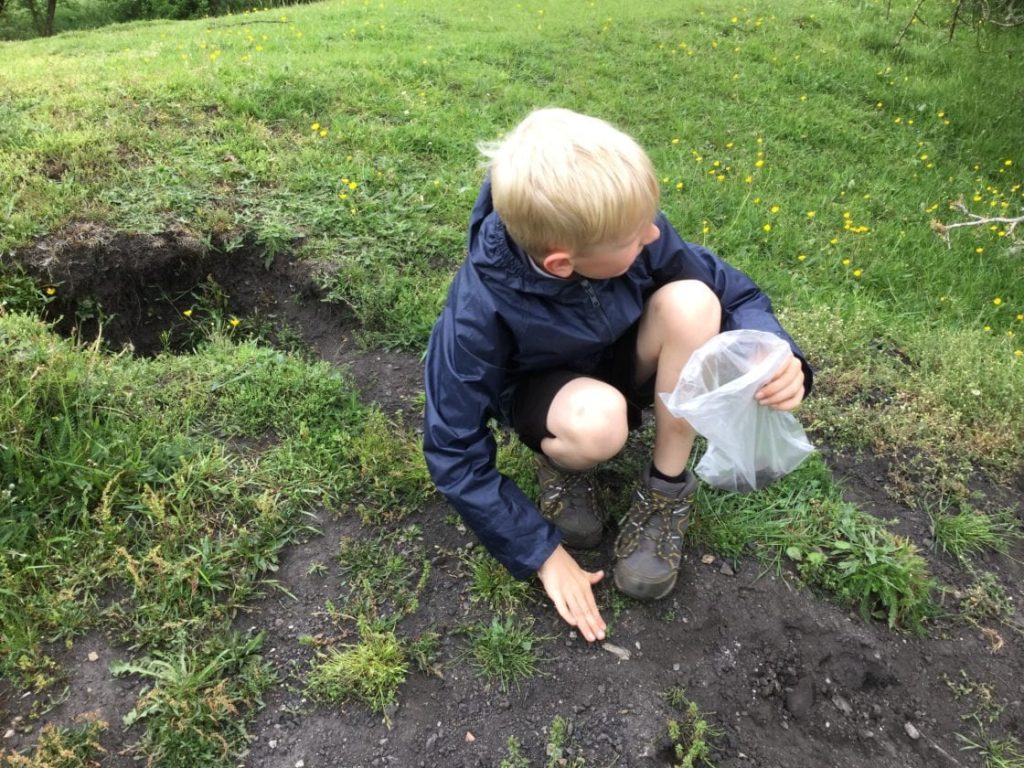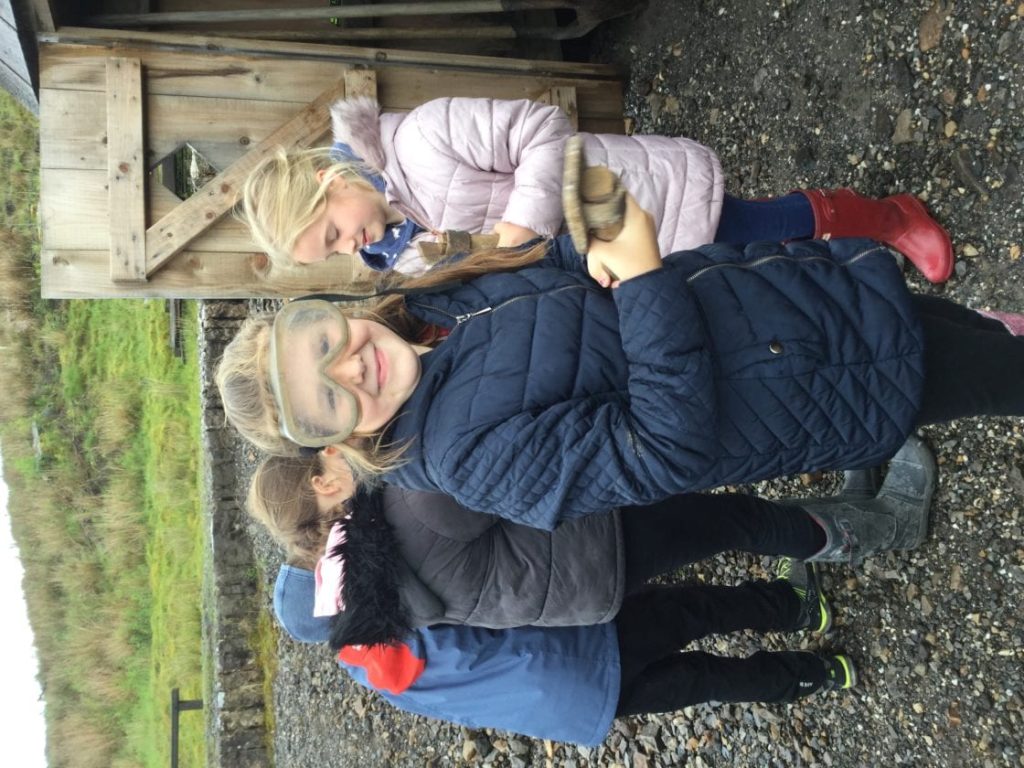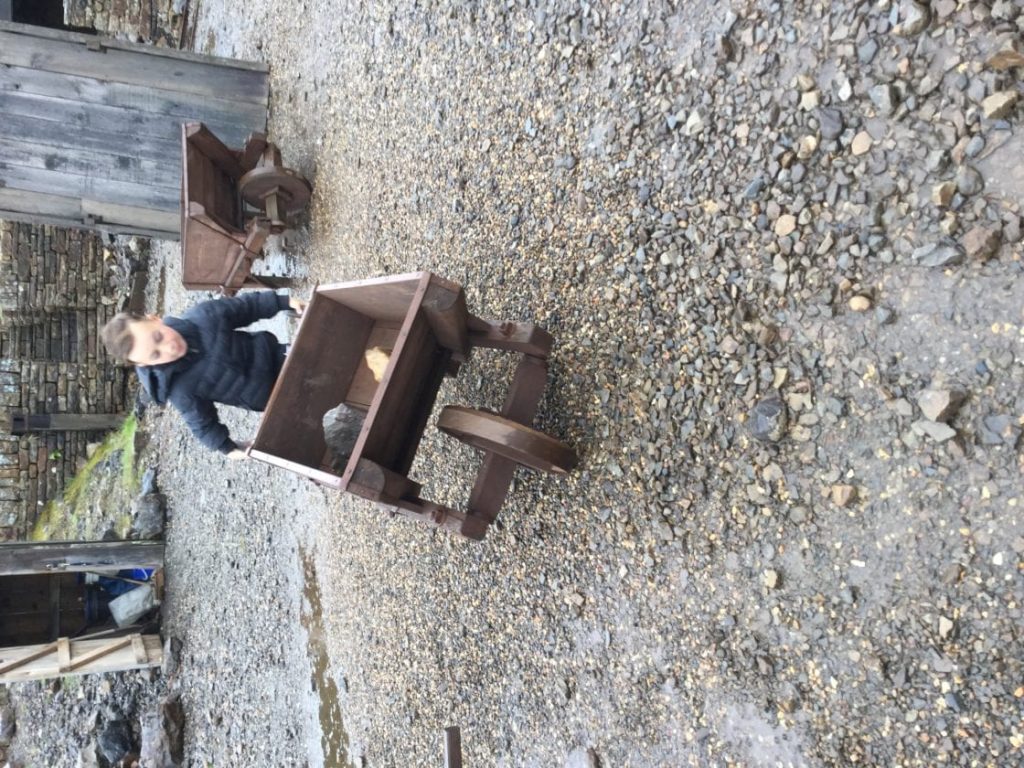Class 2 are taking part in an OASES School of Rocks project to support the children’s understanding of rock formations in our local area
The second session included a short field trip to Cockfield Fell to look at aspects of mining that could still be identified in the local landscape. A walk along part of the Haggerleas Railway line that lead to Ramshaw could be identified by its straight route and a bridge over the river that the trains used to run across. Coal and shale were found on the ground and collected by the children. The remains of a number of coke ovens were also found under the trees near the river, the children noticing the blackened brickwork which was evidence of the burning activity undertaken there. Once back in the classroom the children compared and contrasted maps of Ramshaw from 1859 and the present, looking for evidence of the mining activity on the old map and contrasting this with the missing features on the new. Finally, they constructed their own geological map of the Ramshaw area, designing their own colour scheme and corresponding key.
The third session was a full day visit to Killhope Lead Mining Museum. The children were escorted by a guide around the Mine Office and Blacksmiths shop, finding out about the hard lives of the miners. They learnt about the many ways in which the lead mined at Killhope was used, including in paint, plumbing products, crystal and toys. A walk down the mine, through flowing water, to see the conditions miners worked in and the types of jobs that they undertook inside (highlighted by reconstructions and mannequins of the miners) gave the children a valuable insight. Activities undertaken at ‘The Washing Floor’ allowed the children to understand the process of extracting the lead from the mined ore and find examples of galena as well as fluorspar to take home with them. Finally, a visit to the water wheel and the mechanised processing facility that was installed when production increased, gave the children an opportunity to understand how the mine had developed.
The fourth session was a visit to Ramshaw Hall to look at the construction of dry stone walls at the property. Hannah explained the process of carefully selecting appropriate sized and shaped stones to build up the layers and fill the gaps with smaller stones. The children then had an opportunity to repair some gaps in the tops of the walls around a field on the property.















